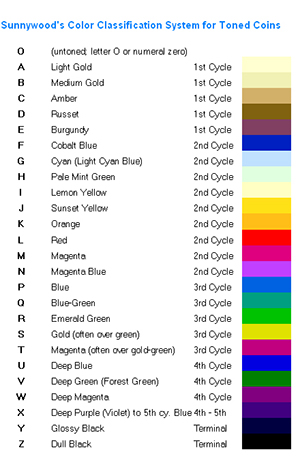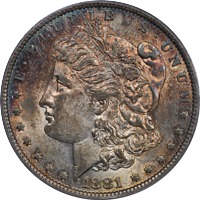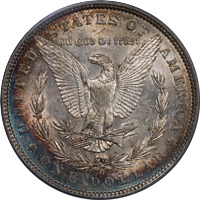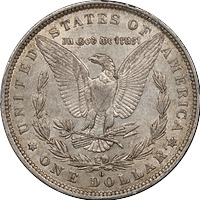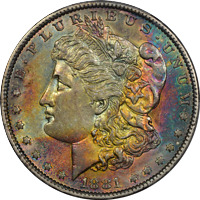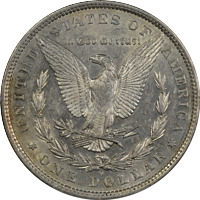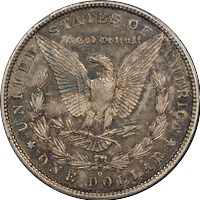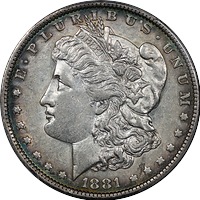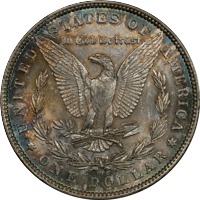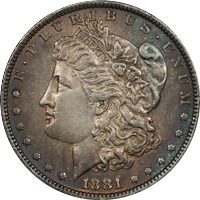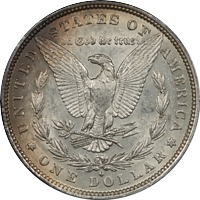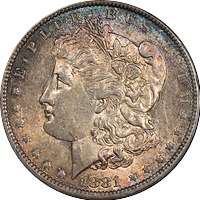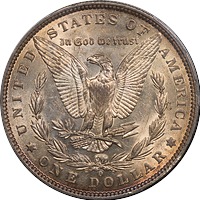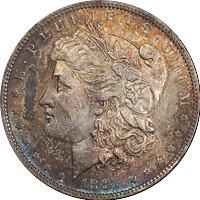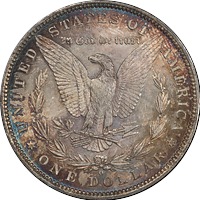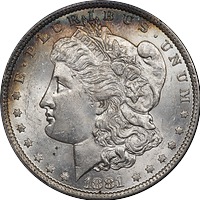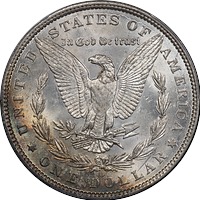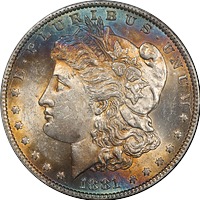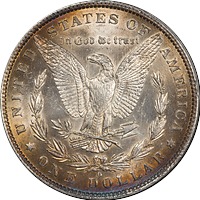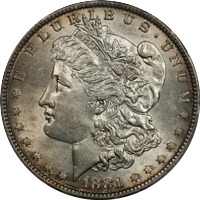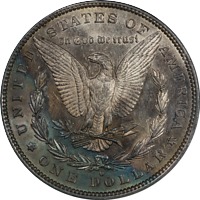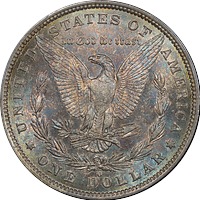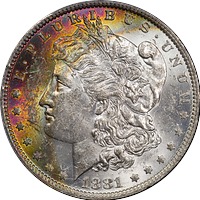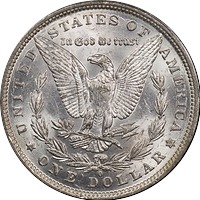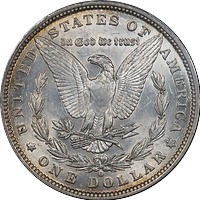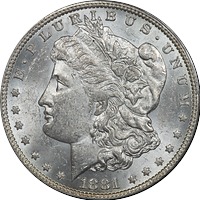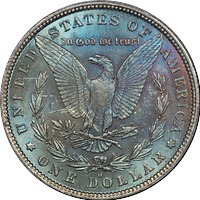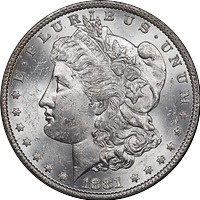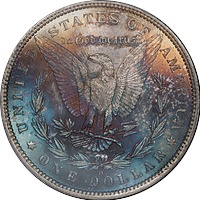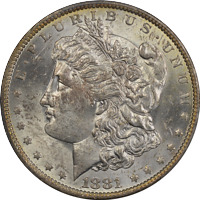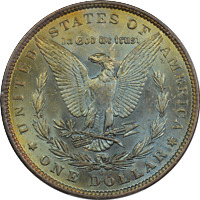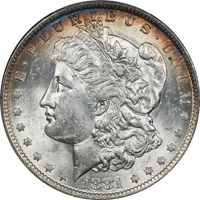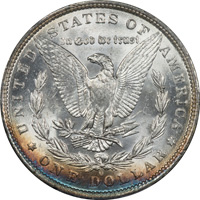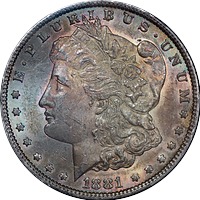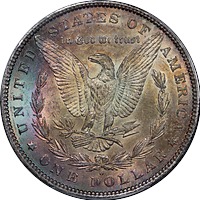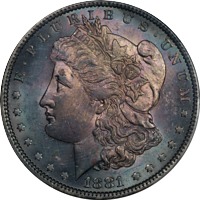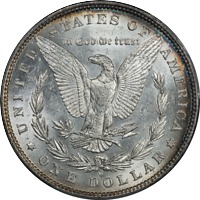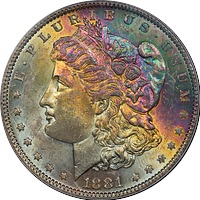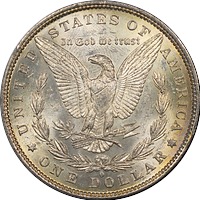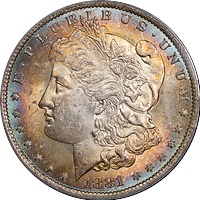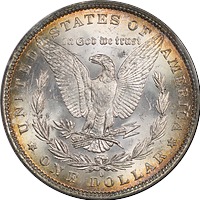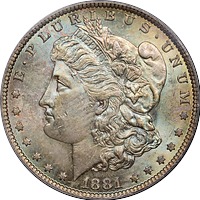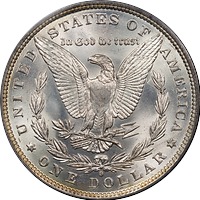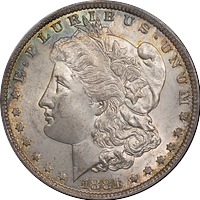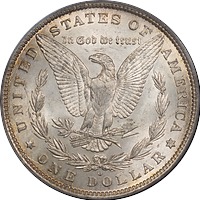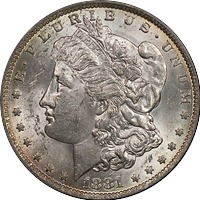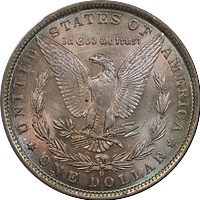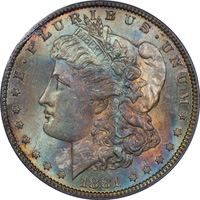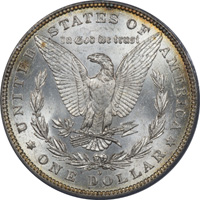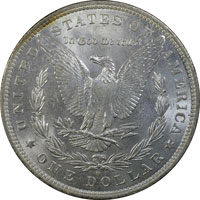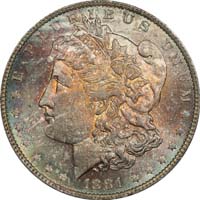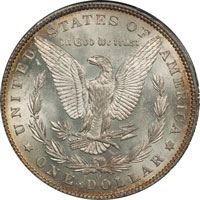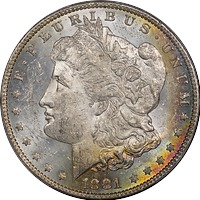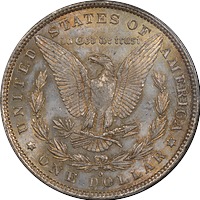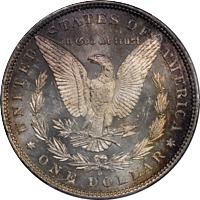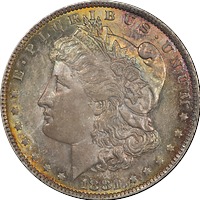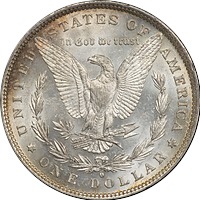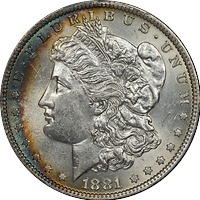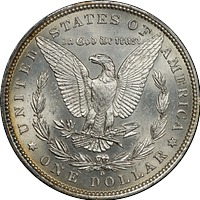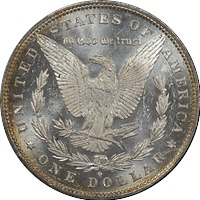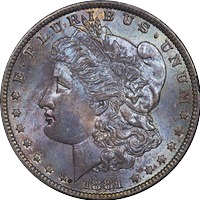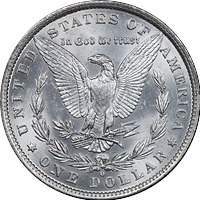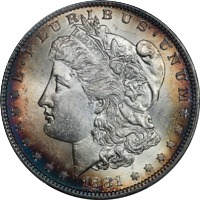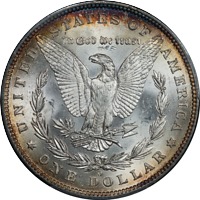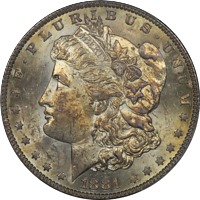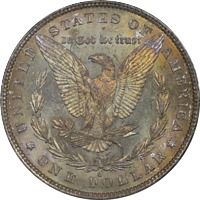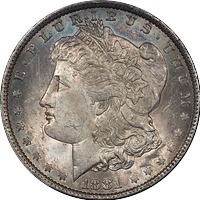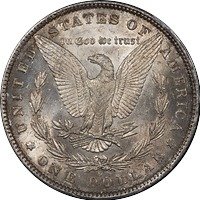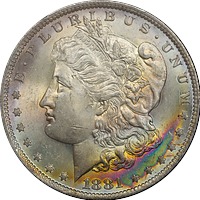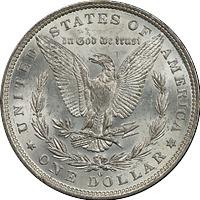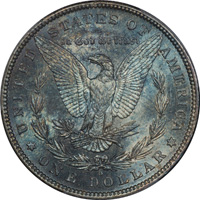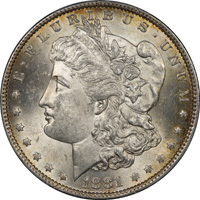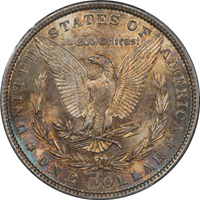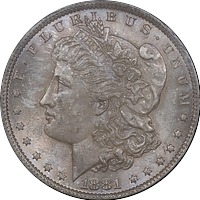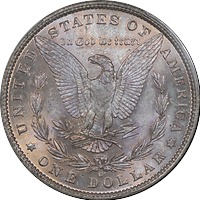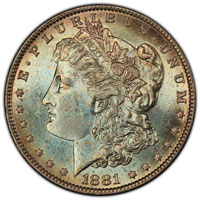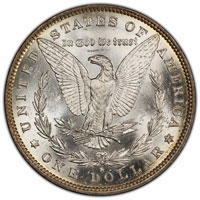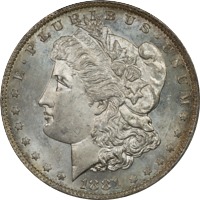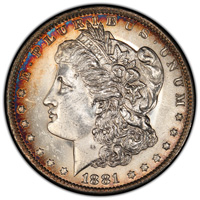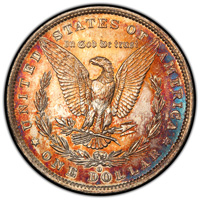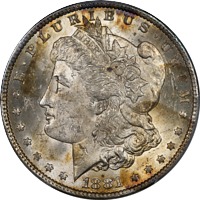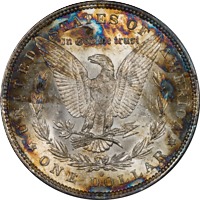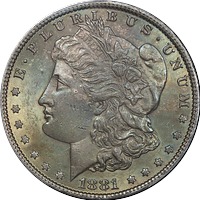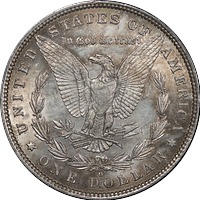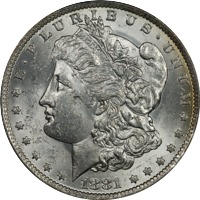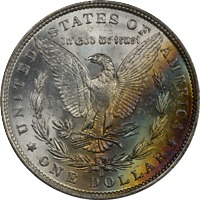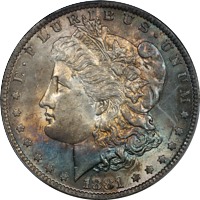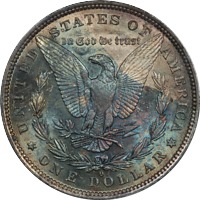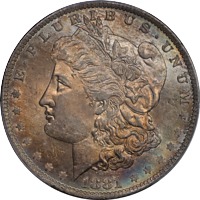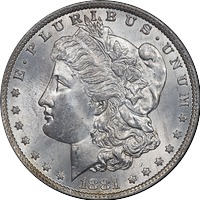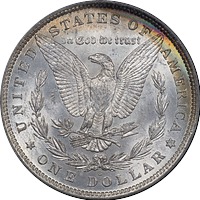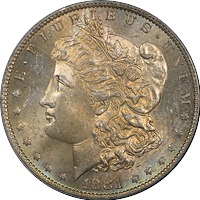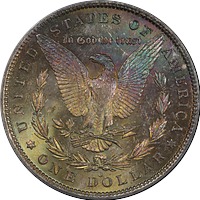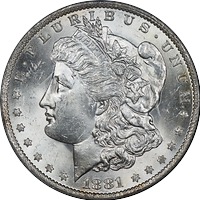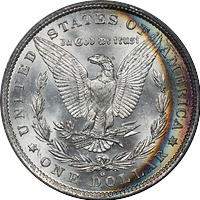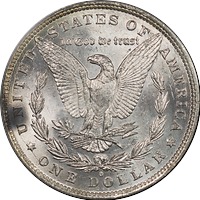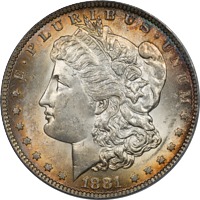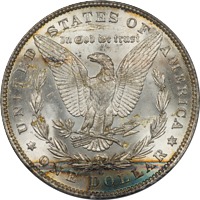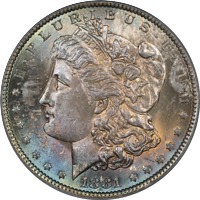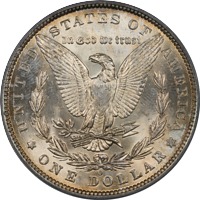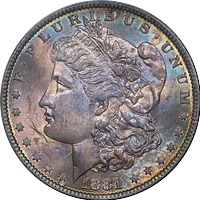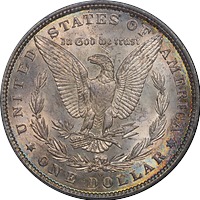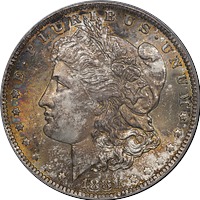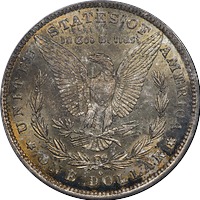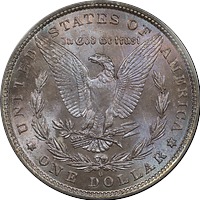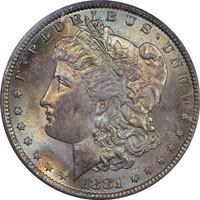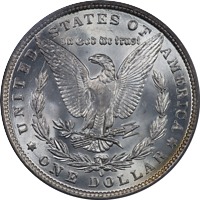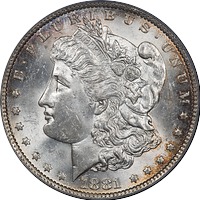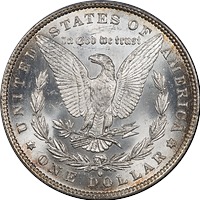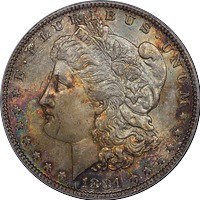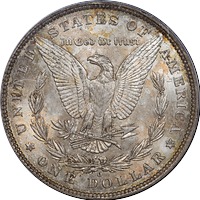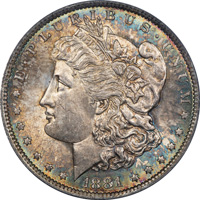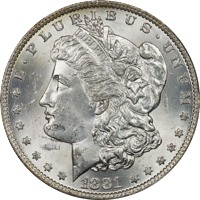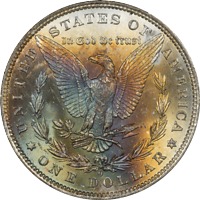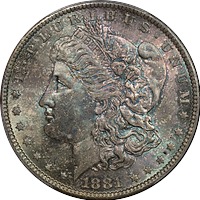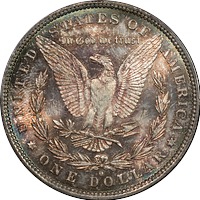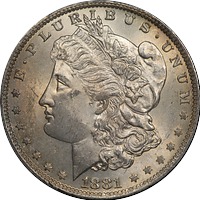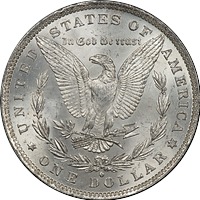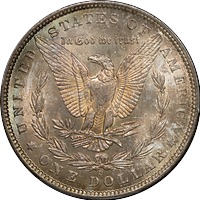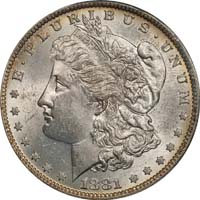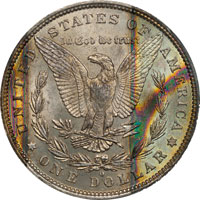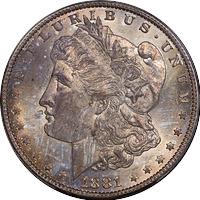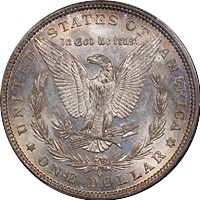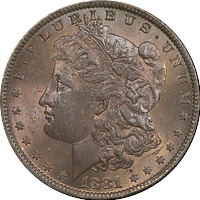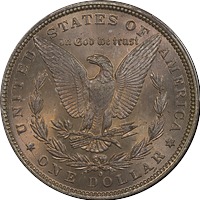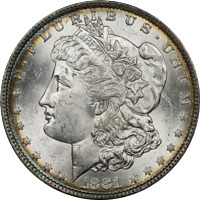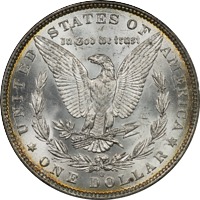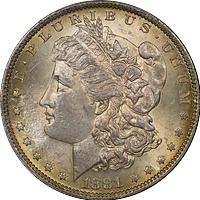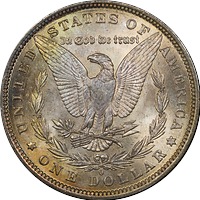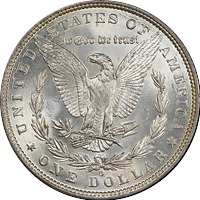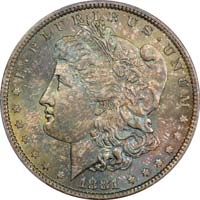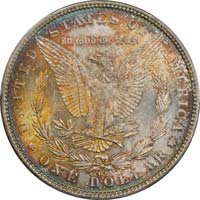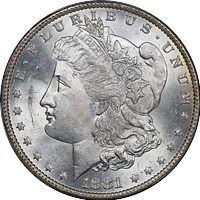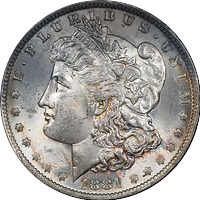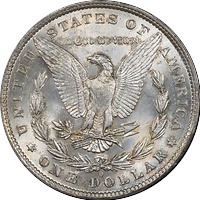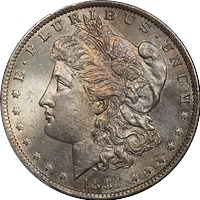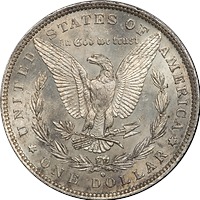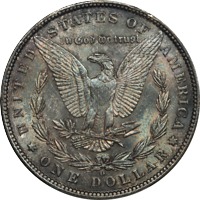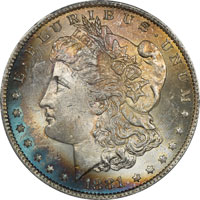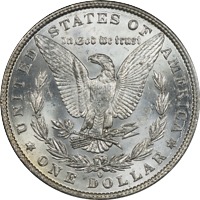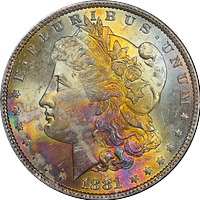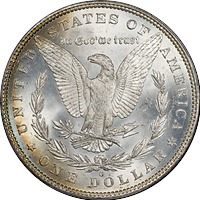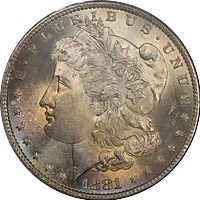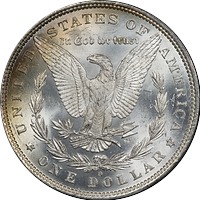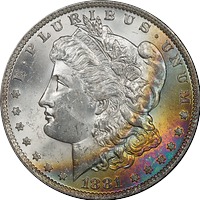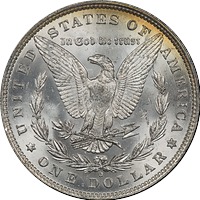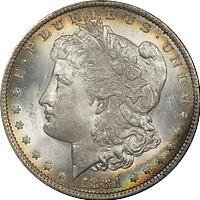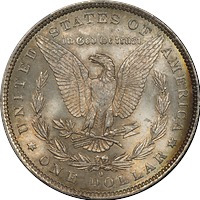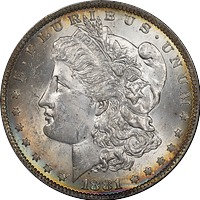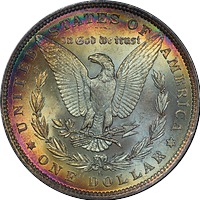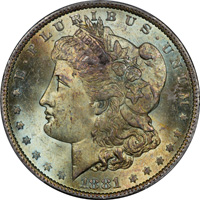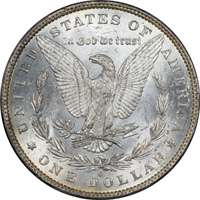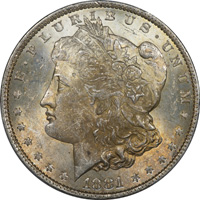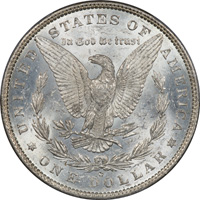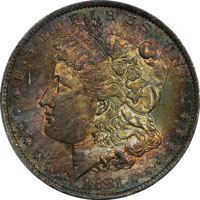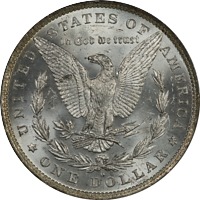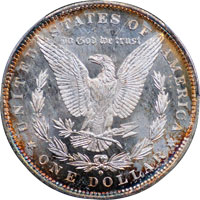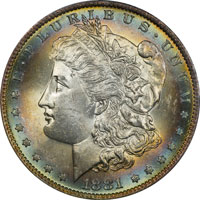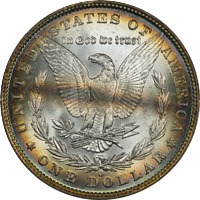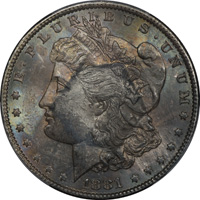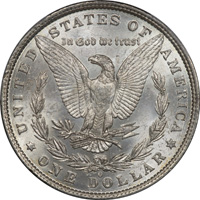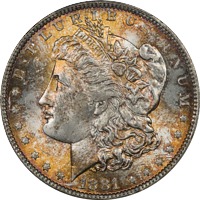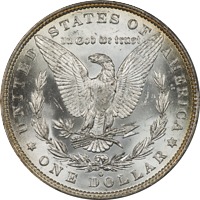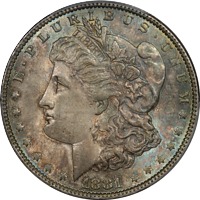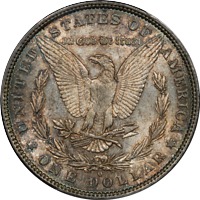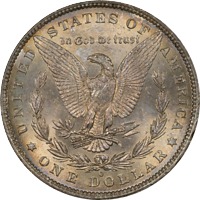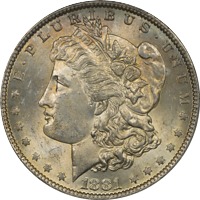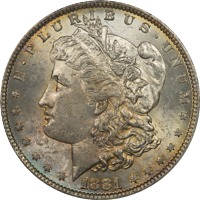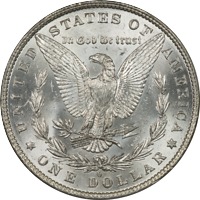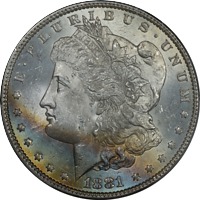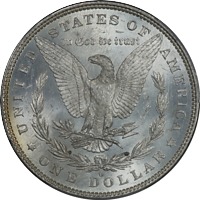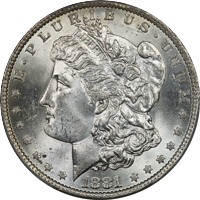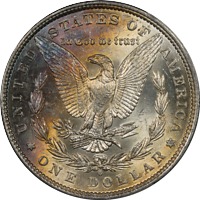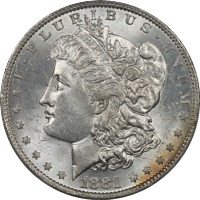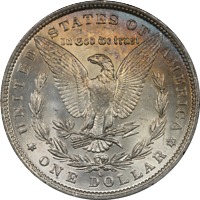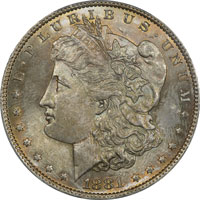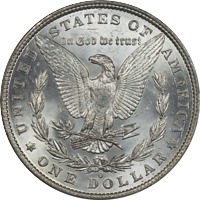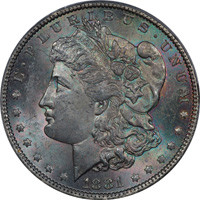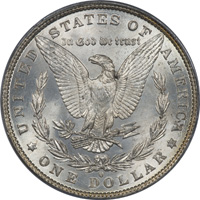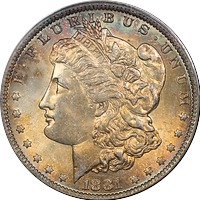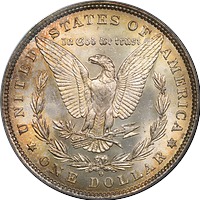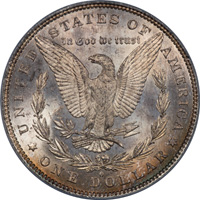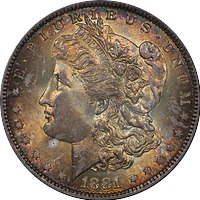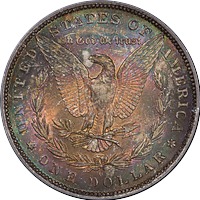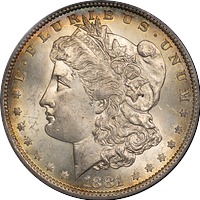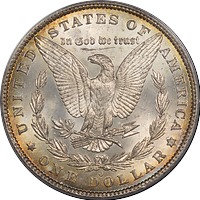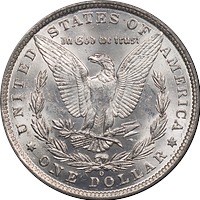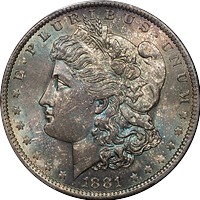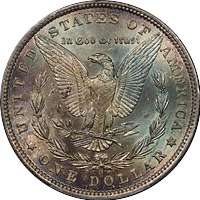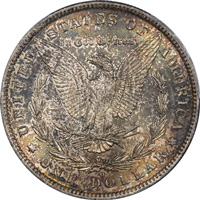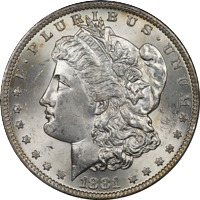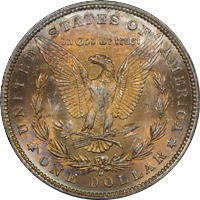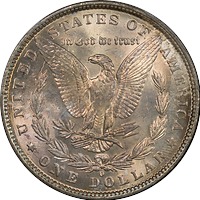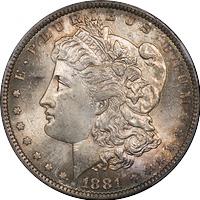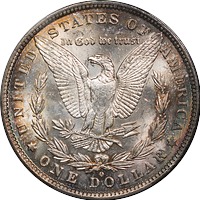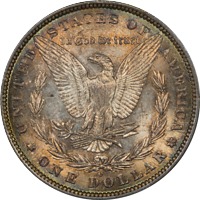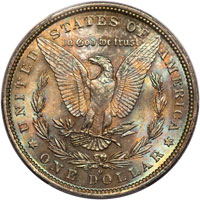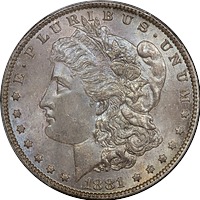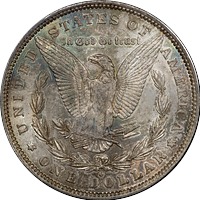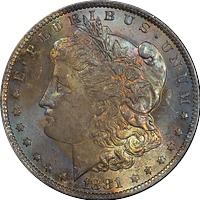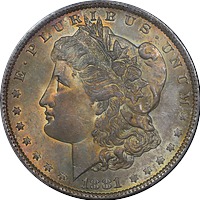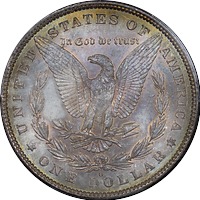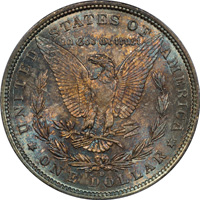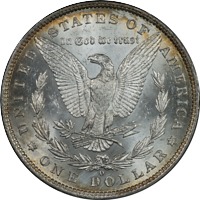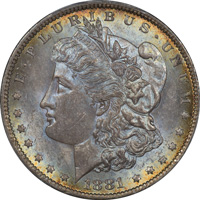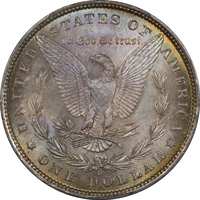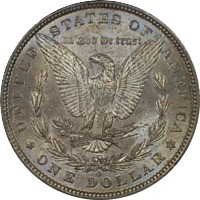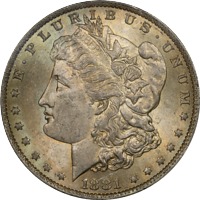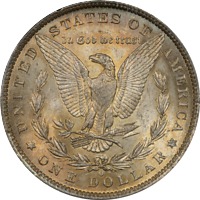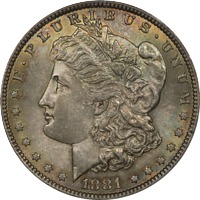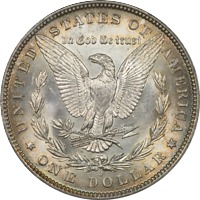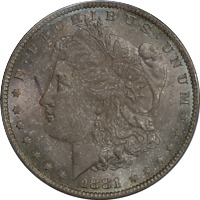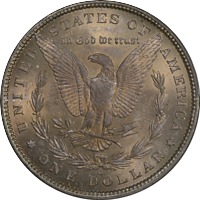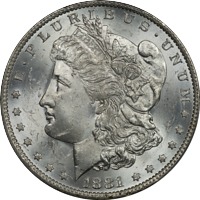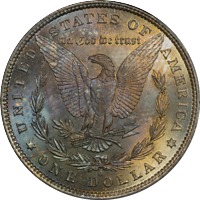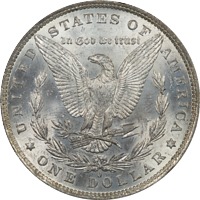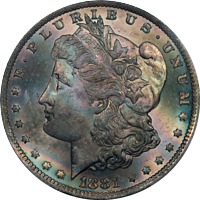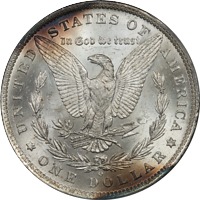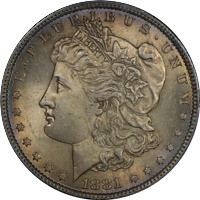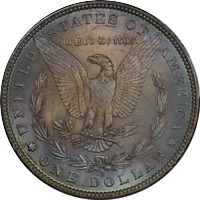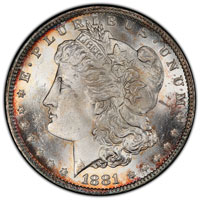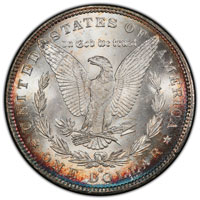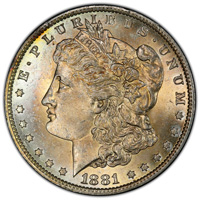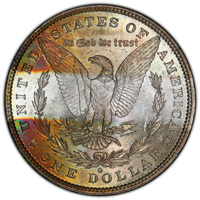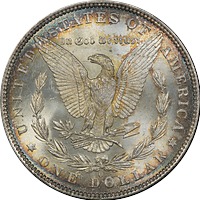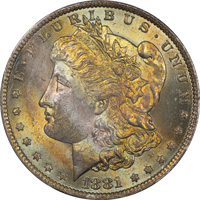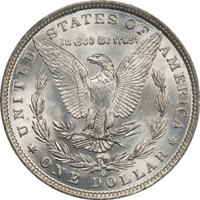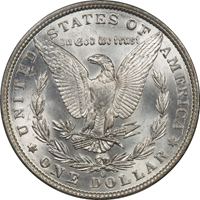

Toned Coins
Sources
Search
Contact
Home
We are not quite sure why toned coins hold such an attraction, but it could be that they are just so out of the ordinary that they grab our attention. No matter why, eventually you will run across some and you are at a crossroad. If you find them fascinating then you begin to focus on them, if not then not.
Sources of Toning
Colors in Toning
Toning Shape
While a full discussion of toning could take days or weeks, the basics are that toning occurs on a Morgan Dollar when some form of thin film interference physically and, most importantly, optically alters the coin. The most informative articles on the topic we have located are written by Doug Kurz. If you have an interest in toned Morgans we encourage you to follow the links at the bottom of this page. Other articles of interest are also listed.
For Morgan Dollars there are a number of ways toning could occur, but most toning came from exposure to sulfur an various forms. For example, to discourage rats from eating through the mint bags, sulfur was added to the bag cloth. It was also contained in coin wrappers for coins that were rolled, as well as envelopes and tissue paper used to store individual coins.

Other toning came from exposure, most often to moisture in storage facilities or during transportation. This toning is often less appealing to collectors than the silver sulfur type coloration, but sometimes the mixture of the two becomes even more interesting.
Evenly toned Morgans are possible, but improbable because even exposure of the coin to the reagent was almost impossible. Coins lay on top or underneath each other. They were wedged between each other and only the ends were near the surface. They were bagged and re-bagged, and shifted positionally within bags, vaults, railroad cars, and all other manner of abuse.
Then the actual storage facilities played a big part. Coins stored deeply in vaults where air was stagnant and temperatures were constant were less likely to color. Coins that were moved repeatedly, stored in damp locations, or kept in early coin albums were much more likely to pick up color.
But there are other actions that caused toning. Once a coin was in the hands of a collector or consumer it could be stored in ways that produced toning. Storage in a drawer or box where velvet was present was a source. You might also pick up sulfur toning in coin albums or envelopes. And then there is some sulfur naturally around us which causes things to tarnish, like your silverware.
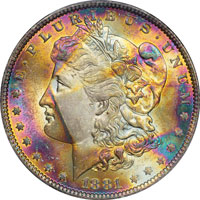
If you are like us, our best physics and chemistry days are long in the past, so we are much better off relying on the knowledge of these experts.
As explained by Doug Kurz in his articles, toning occurs in five stages. Each stage has a distinctive color sequence or range based on exposure and film accumulation. The fifth and final stage is where we see a glossy to dull black. The stages are not unique to Morgan Dollars and are the result of chemistry and physics. They always follow in this sequence, but they are not alway visible since they can be replaced as the coin accumulates more film residue.
This chart will open up in a separate window that you can use as a reference with any coin image. Just click on the chart for it to open.
This chart is from the article on toning by Doug Kurz titled "Sunnywood Toning Classification System," which is linked below. In our quest for knowledge we found nothing more scientific nor understandable.
Caution on Toning
In recent years some unscrupulous individuals have become adept at creating artificial toning on Morgans and other coins. The number of truly "Monster Toned" Morgan Dollars is very small. So if you have suspicions consult an expert before plunking down extra money for a toned coin. Although not perfect, purchasing a certified coin removes some of the doubt.
One check is for "mint bag toning" or crescent shaped toning. Also from the work by Doug Kurz, the normal or natural progression for the colors in these coins is:
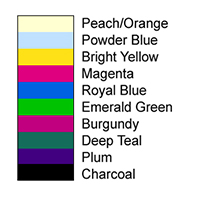
When coins deviate from this pattern or sequence, investigate more closely. Toned coins of any denomination are popular, but their popularity opens other doors. If the coin looks too good to be true, it probably is.
Often you need to stop and think about a coin when you see toning to imagine how it occurred. When you do you can sometimes rule out coins with artificial toning because what you are seeing has no logical explanation.
Crescent Shaped Toning is the most easily recognized, as in our Mint State 61 28738613. This probably occurred because this coin lay underneath another in a mint bag, and was only partially exposed.
Overall or more even toning occurred when the whole surface of a coin was exposed. Even this has variation caused by exposure differences, but also by the purity of the metal in various areas of the coin. Since copper reacts differently than silver, it is possible for an uneven metal purity to come into play.
Our Collection
While we do not specifically buy toned 1881-O coins, we certainly appreciate the ones that come out way. These were accumulated over the years and purchased with little or no premium paid for the coloration. When we started to put together this section of the web site we were more than a little surprised by the number of toned coins we have. Apparently you (we) are unknowingly attracted to the color and eye appeal.
We believe that for a VAMer toned coins offer an even greater appeal and challenge. Many VAMs are rate, but how rare is a VAM 5 with exceptional toning?
Why We See It
As explained by Van Allen and Mallis, silver is the most reflective of all metals. When we see toning or color what we are actually seeing is light reflected through whatever has adhered itself to the surface of the coin. This is most often referred to as thin-film refracting.
In layman's terms, we see color because the silver sulfate film that adheres to the surface of the coin causes light to reflect and refract from the coin's surface differently. On one end of the scale there is a light yellow as the coin just started to acquire a tone. On the far end of the spectrum we see black, or "tarnish" much like your sterling silver flatware.
The longer the coin was exposed to a reactive agent, such as sulfur, the thicker this film became. The thicker the film the greater the refraction until what we see is black.
It should also be noted that we are all different, and to a lesser degree what I see in the color spectrum will be slightly different than what you see. Most often this difference is slight, but it is a factor. It is just genetics and there is nothing either of us can do about it.

Total Collection
Coins by Grade
Coins by VAM
Toned Coins
Favorite Coins
Our Collection
Missing VAMs
Clicking on any coin image will take you to that coin's individual page
53 Almost Uncirculated
55 Almost Uncirculated
58 Almost Uncirculated
60 Mint State
61 Mint State
62 Mint State
63 Mint State
64 Mint State
65 Mint State
Getting Started
Collecting The 1881-O
The 1881-O VAMs





















